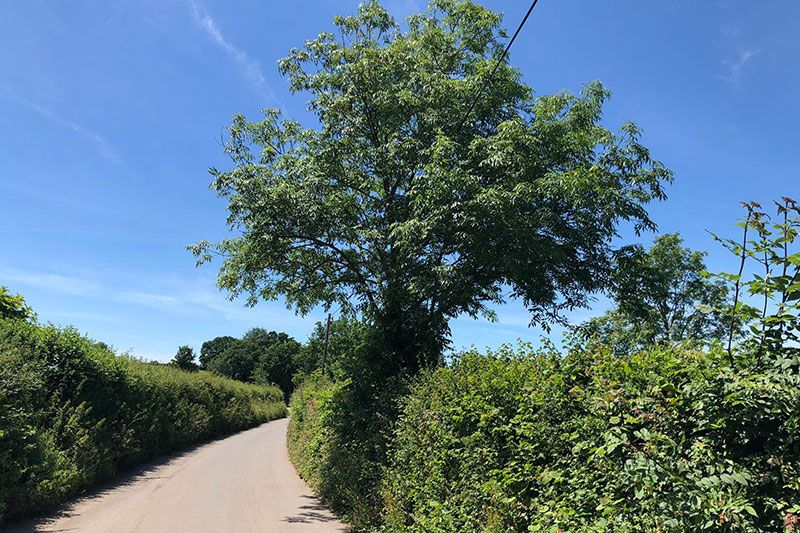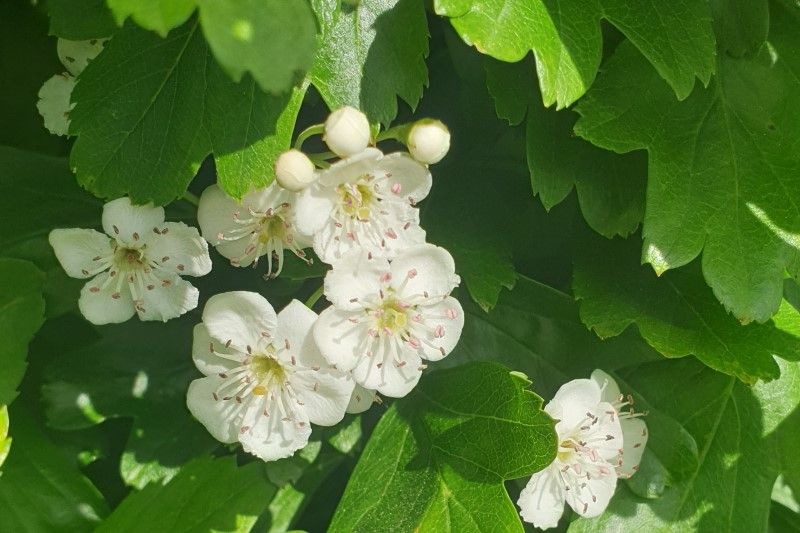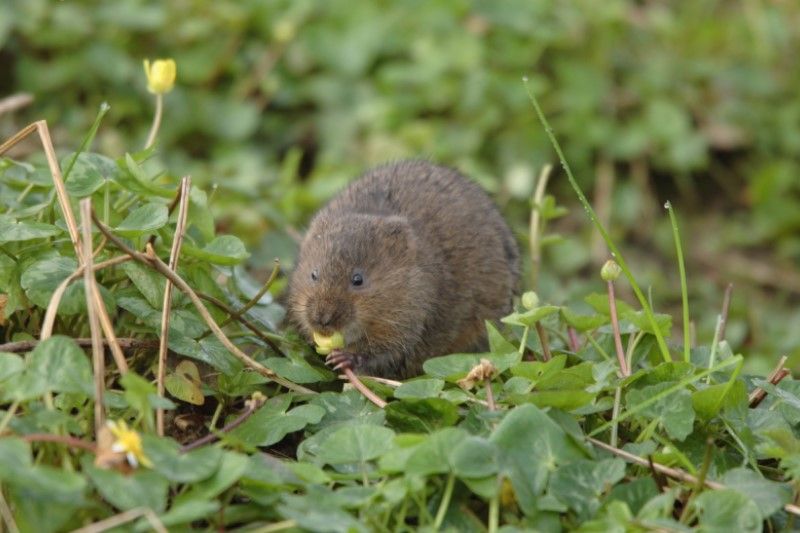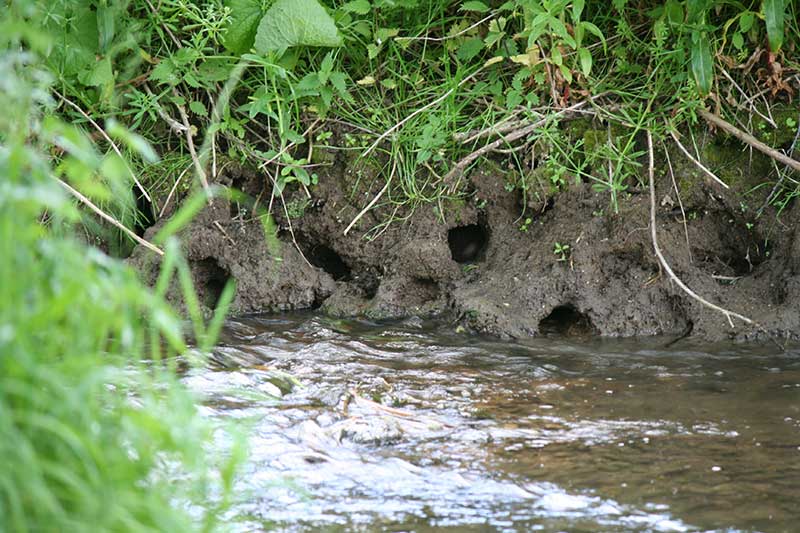Survey hedgerows
The lengthening days bring with them temperamental weather, swinging from showers to glorious sunshine that sparkles on waterways and bounces off fresh green growth. They also announce the start of People’s Trust for Endangered Species’ survey season. This time of year offers the chance for people across the UK to get involved in conservation by looking for endearing yet elusive water voles, and surveying one of our most familiar habitats, hedgerows.
Hedgerows are a well-recognised feature of the British countryside, but one that is often overlooked in terms of its wildlife value. When managed well, the wider hedge network can provide a mosaic of woodland edge habitat. Layers of trees, shrub and grassland each offer a different suite of wildlife resources: birds like the song thrush sing from the tops of hedge trees in the spring and nest in the shrub layer; deadwood provides a suitable home for Britain’s more than 2000 deadwood-dependent invertebrates; and hedgehogs happily hunt at the hedge base and take cover when needed behind grassy tussocks.
Sadly, more than 50% of Britain’s hedges have been lost since the mid-twentieth century. Others are at risk of loss from inappropriate management. There is an urgent need to monitor the health of hedges and improve their management nationally, which is where volunteers come in.
People’s Trust for Endangered Species’ (PTES) Great British Hedgerow Survey (GBHS) provides insight into the health and wildlife value of an individual hedge and generates bespoke management advice that’s tailored to maintaining or enhancing an optimal hedgerow habitat for wildlife. Based on an earlier survey developed by DEFRA, the GBHS takes a surveyor just 20 minutes per hedge and can be completed any time between May and September.
To take part, volunteers simply download a survey form from PTES’ website, find a hedgerow and answer questions such as the hedge’s connectivity in the wider landscape and its position in the hedgerow management lifecycle (based on the 10-point structural scale by Nigel Adams). The data are then uploaded to PTES’website and free management advice is provided accordingly, such as the need to rejuvenate a hedge through laying or coppicing if the hedge is over- or under-managed.
In addition to providing bespoke management advice, the GBHS generates scores for structure, connectivity and wildlife value, as well as an overall score. As repeat surveys are carried out after a number of years, changes to the scores in each of these areas can be observed. The data gathered allow PTES and partners to see how the health of Britain’s hedges is changing over time – and at an increasingly large scale as use of the survey expands. This informs future conservation work and research projects. If you’re a volunteer, land manager or part of a group who’d like to get involved, visit hedgerowsurvey.ptes.org. Find out more information about the hedgerow management lifecycle.
Survey water voles
Another survey that starts with the onset of spring is PTES’ water vole survey. This is part of the National Water Vole Monitoring Programme (NVWMP) which PTES set up in 2015 to try and combat the decline in water vole numbers nationally.
Despite once being a common sight on our riverbanks, water voles are now one of Britain’s fastest declining mammals. This charming creature was immortalised in Kenneth Grahame’s classic children’s tale, The Wind in the Willows, in 1908. The character ‘Ratty’ – a boat loving, affable gentleman – was not a rat but in fact a water vole.
In Grahame’s day, water voles would have been commonplace, inhabiting most rivers, ponds, and sometimes grasslands. Sadly, they’re now a rare spectacle and have suffered a staggering 90% drop in population since the 1970s. Accidental and deliberate releases of American mink and the loss of healthy riverbanks almost led to the extinction of water voles by the end of the 20th century.
Although reduced in numbers, water voles are still thriving in some areas, and PTES needs the help of volunteers across England, Scotland and Wales to find where these populations are, and which need the most help. Data from surveys like this inform PTES’ conservation work with farmers, landowners and local authorities, and helps restore water vole habitats and even reintroduce them to places they were once lost.
Water voles prefer slow moving waterways not prone to drought or flooding, with soft banks in which they can dig a network of burrows. They often leave clues on the riverbank such as fist-sized burrows, caches of chewed plant stalks, and piles of blunt-ended, odourless, tic-tac shaped droppings. To mark their territory, they rub their hind feet on scent glands on their chests and then stamp all over their droppings.
They can be mistaken for rats, though there are many differences. Rats have long, pink tails, pointy noses, and pink ears. Water voles have short, brown, furry tails. Their noses are rounded, and their brown ears are tucked away beneath fur. If in doubt, an unmistakable ‘plop’ likely means you are in the presence of a water vole, as they quickly dive into water to escape danger.
Due to their elusive nature and falling numbers, water voles can be difficult to survey, but not impossible.
To take part, all volunteers need to do is look carefully for water voles and their signs (burrows, droppings etc) along a 500m stretch of local riverbank, ditch, or other wetland habitat once a year between 15th April and 15th June. The survey may take around an hour, with the results submitted online. Register yourself as a water vole surveyor today. As spring moves into summer, there are other PTES-led surveys that volunteers can take part in, from submitting stag beetle sightings as part of the Great Stag Hunt from late-May into June, to recording roadkill from July onwards as part of Mammals on Roads.
This article was originally written for Countryside Jobs Service. We’re delighted to have been chosen as CJS’s featured charity for 2023. Along with generous free advertising, CJS supports charities like ours by offering their supporters the option to add a donation to their subscription. This, they’re proud to say, is to help charitable organisations like People’s Trust for Endangered Species (PTES) to spend donations where it really counts.
Header image credit Megan Gimber




